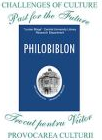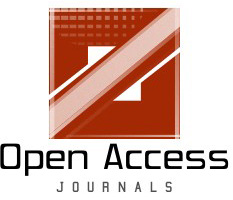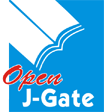Download Cover Page
IJRSS_April_2020......
PARTICULAR
|
Page No.
|
 PRESENT STATUS AND PROBLEMS OF MUSSEL FARMERS IN KERALA-A CASE STUDY OF KOLLAM DISTRICT
PRESENT STATUS AND PROBLEMS OF MUSSEL FARMERS IN KERALA-A CASE STUDY OF KOLLAM DISTRICT
ABDUL KALAM AZAD, DR.P.N.HARIKUMAR
Abstract:
Aquaculture simply means theproduction of aquatic organisms as well as fishes, molluscs crustaceans, and aquatic plants. This form of cultivation originated in China about 4000 years back.Kautilya‟sArthasastra- one of the oldest Indian epics indicates that fish culture activity in India dates back to 2000 years.Mussels are included in the molluscan species. Open sea and estuaries are most suitable for mussel farming. Farming of Mussel is most important due to their advantages like they feed directly on the primary producers like the phytoplankton and it can be farmed three dimensionally in the water column at the farm site.Aquaculture is the fast growing food production sector with an average of 4.8 % annual growth during 2011-17. In 2017 the total production reached 80 Million Tones and total sale value to 238 Billion. In 2017 among the top producers of Aqua products (excluding aquatic plants and non food products) china is the first position with 46.8 M.T and India standing second with 6.2 M.T.Green Mussel (PernaViridis) and Brown Mussel (PernaIndica) are most available mussels along the Indian coast.Totalmussel production in 2017 was 2.16 MT through aquaculture and 86,000 t in capture fisheries all over the world.Annual bivalve production in India during the year was 84483 t. Among this Clams dominated the fishery contributing 72.9% to the annual bivalve production followed by oysters 20.5% and mussels 6.5%. Major share of the bivalve production of the country was reported from the State of Kerala (75.8%). Total inland and marine fish productions of Kerala in 2013-14 was 186337 t and 522308 t respectively. But in 2017-18 inland fish production has increased to 189081 t and marine fish production decreased to 483686 t. Total mussel production during 2013-14 was 23969 t in Kerala and 680 t in kollam district. In 2017-18 total mussel production in Kerala is decreased to 2541 t and in kollam district the same is 195 t. The present statistics shows that there are some serious issues related to the farming of mussels in kerala
Download full Length
Paper......
|
1-9
|
 THE SCENARIO OF POPULATION GROWTH IN SOUTH 24 PARGANAS DISTRICT, WEST BENGAL, INDIA
THE SCENARIO OF POPULATION GROWTH IN SOUTH 24 PARGANAS DISTRICT, WEST BENGAL, INDIA
Dr. Jiban Krishna Mandal
Abstract:
The South 24 Parganas is the largest and the second populated district is originated on 1st March in 1986 in West Bengal state in India. The paper primarily explains about the history of population growth and gives an overview of the trends of population growth over hundred years of the district and patterns of population growth has been discussed in block level for last three decades. It explains the differential population growth for both rural and urban areas. It also suggests that the rural unemployment and diminishing agricultural productivity are responsible for the rural urban migration and resultant very high population growth in urban areas than rural areas. This paper attempts to identify the accelerating population growth in the northern part of the study area which is contiguous to Kolkata due to the urbanisation, industrialization and commercialization etc. whereas declining trends of population growth has been observed in the rural agrarian littoral deltaic southern part which is contiguous to the Sundarbans mangrove forest
Download full Length
Paper......
|
10-26
|
 Teno Proactive Communication Model for Job Creation in Nigeria
Teno Proactive Communication Model for Job Creation in Nigeria
Onyejelem, Timothy Ekeledirichukwu
Abstract:
This study postulated a Teno Proactive Communication Model for Job Creation in Nigeria. The model was designed to explain the need to effectively engage different segments of the Nigerian youths on the significance of involving themselves in the business of acquiring technical skills alongside school certificates for self-reliance; acquisition of skills alongside academic degrees for more job options which would make them become self-reliant, job and wealth creators. The model was anchored on four major canons such as communication content, medium, target audience, and objectives. The model highlighted the importance of technical education; the need to acquire additional skill while in school; and the need to explore other avenues for entrepreneurship, using the classroom, seminar, workshop, field trip and mass media as channels for a proactive communication that will not only explain the unemployment problem in Nigeria but invariably provide answers to the joblessness quandary in the rich-poor country.
Download full Length
Paper......
|
27-33
|
 ORGANIZATION OF TAX AUDIT IN THE REPUBLIC OF UZBEKISTAN
ORGANIZATION OF TAX AUDIT IN THE REPUBLIC OF UZBEKISTAN
Kurbanov Ziyat Niyazovich
Abstract:
This article is devoted to the consideration of the theoretical issues of tax audit. In addition, it reveals the tax audit standard introduced in the Tax Code of the Republic of Uzbekistan in new wording. Moreover, the article studies foreign experience in organizing and conducting tax audit.
Download full Length
Paper......
|
34-43
|
 THE LEGISLATIVE FRAMEWORK FOR IMPROVING INFORMATION AND COMMUNICATION TECHNOLOGIES IN UZBEKISTAN
THE LEGISLATIVE FRAMEWORK FOR IMPROVING INFORMATION AND COMMUNICATION TECHNOLOGIES IN UZBEKISTAN
Sativaldieva D.A.
Abstract:
The article discusses the legislative basis of information and communication technologies. Currently Uzbekistan is standing at the initial stage of economy digitalization. An effective transition requires a strong legal framework that will provide a solid foundation for the digital economy. Relevant conclusions are made and proposals are given for reforming the legislative framework of information and communication technologies in Uzbekistan.
Download full Length
Paper......
|
44-48
|
 The History and Historical Research Methodology of Dr. Abdul Al-Aziz Al-Douri through his Book "Introduction to the History of Islam "
The History and Historical Research Methodology of Dr. Abdul Al-Aziz Al-Douri through his Book "Introduction to the History of Islam "
Tareq Mohammad Al-Azzam
Abstract:
This study aimed to understand the scientific foundation of Islamic history study approach at Dr. Abdul Aziz Al-Douri, through his book introduction to the history of Islam. AlDouri identified in his book the places of discrepancy in the old and new historical writing, and the impact factors in the Arabs history that led to its formation and formulation. The study presents an accurate scientific approach to study the Arab-Islamic history based on the comprehensive historical view, the novels' uncertainty, and the refusal to take predetermined opinions without evidences, stressing on the importance of studying novels from all its various aspects. The study concluded that Al-Douri presents a well-established scientific methodology to study the history, based on suspicion in the novel and reading it in its political and social context
Download full Length
Paper......
|
49-58
|
 Analyzing the Development of the Chishti Silsilah in Delhi: A Case Analysis of the Role Played by Shaikh Nizamuddin Auliya
Analyzing the Development of the Chishti Silsilah in Delhi: A Case Analysis of the Role Played by Shaikh Nizamuddin Auliya
Dr. Chandni Sengupta
Abstract:
In the early medieval period, Delhi emerged as the nerve-centre of Islam. With the establishment of the Delhi Sultanate, the city came to be regarded as a safe haven for not only the rulers and the nobility but also the scholars and men of piety. Gradually, Delhi became a focal point of Sufism. The most prominent silsilah in Delhi was the Chishti silsilah and the most popular Sufi saint was Shaikh Nizamuddin Auliya. This paper aims to analyze the rise and development of the Chishti silsilah and the role played by Shaikh Nizamuddin Auliya in popularizing Sufism in the city.
Download full Length
Paper......
|
59-66
|
 Paper in Hindi
Paper in Hindi
Amit Kumar
|
59-62
|
 An Overview of the Lifestyle Patterns and Cancer in India
An Overview of the Lifestyle Patterns and Cancer in India
Akhter Hussain Bhat
Abstract:
Cancer is the second leading cause of death worldwide. About 1 in 6 deaths is due to cancer. Cancer is caused by the tendencies and the triggers. Tendencies refer to hereditary or genetic factors while the triggers can arise from the environment, from one’s lifestyle or from some virus. The lifestyle factors include smoking, improper diet, alcohol, infections, physical inactivity and so on. According to the Cancer Foundation of India (CFI), Kolkata, 60-70 per cent cancer cases in India are lifestyle oriented. This paper is an analytical and descriptive one. It seeks to describe the role of lifestyle patterns in the causation of cancer in India. The work is based on secondary data.The findings indicate that of all cancer related deaths, almost 25-30% is due to tobacco, 30-35% is linked to diet, about 15-20% is due to infections and the remaining percentage is due to other factors.In India more than 1 million new cases of cancer are diagnosed every year. Although some authors argue that the risk factors in the causation of cancer in India are almost same as in other parts of the world, the specific socioeconomic patterns and bio-cultural factors necessitate exploring other causation trajectories. Research reveals that unhealthy diet, tobacco use, alcohol and drug consumption, low physical activity are responsible for 8, 4.8, 2.5, 0.8 per cent cancer causation in India respectively.Unhealthy lifestyles make a significant contribution to ill health and mortality. Increased public awareness of the links between lifestyles and cancer is the need of the hour as it might help people understand the health consequences of their actions and encourage them to make much needed lifestyle changes.
Download full Length
Paper......
|
63-75
|
 An Exploratory Study of Different Variables in Context to GST Implementation and
Its Impact on Profitability of the Firm: An Empirical Study
An Exploratory Study of Different Variables in Context to GST Implementation and
Its Impact on Profitability of the Firm: An Empirical Study
Vishvas K Shah, Dr. Jigar Aggarwal
Abstract:
In developing countries like India, the taxation system is very crucial role in the
development of revenues of the country. But India tax system is difficult to understand and
in fact for calculation too in case of both direct tax as well as indirect tax. In order to
overcome the problems of the government of India tries to simply the direct tax as well as
indirect tax, the government made the proposal of introducing GST (goods and services
tax) instead of all indirect taxes and DTC (direct tax code) instead of direct tax. But
fortunately GST won the first place in the purview of implementation. The government of
India is committed to replace all the indirect taxes levied on the services and goods by state
and central government in the month of April 2017. This paper made an attempt to explain
the level of impact of this GST (goods and services tax) on the Profitability and taxation
strategies of the organisation from the view point of decision makers.
Download full Length
Paper......
|
76-87
|
 Lives and livelihoods during lockdown: The critical imperatives for India's economy and need to New Education Policy
Lives and livelihoods during lockdown: The critical imperatives for India's economy and need to New Education Policy
Dr. Bitthal Bissa and Dr.Sitaram
Abstract:
There are enough debates ongoing in the country - whether India should focus on lives or livelihood and to my mind, this is not an either or scenario, it is an AND scenario, We need to do both and within the constraints of our economics and healthcare challenges
Download full Length
Paper......
|
88-94
|
 The Myths Regarding Mental Illness in the Society and the Consequences Women Suffer in the Patriarchal World
The Myths Regarding Mental Illness in the Society and the Consequences Women Suffer in the Patriarchal World
Anjali Kumari
Abstract:
Mental disorder, depression are common factors in the current era, we can say it is the curse of technology to human beings. There are many rumours about the mental illness. Stigma about mental disorder is the centre issue faced by Indian society
Download full Length
Paper......
|
95-100
|
 Development of the Indian Constitution through the Leading Judicial
Pronouncements: An Analysis
Development of the Indian Constitution through the Leading Judicial
Pronouncements: An Analysis
Dr.Rabindra Kumar Murari
Abstract:
As we know that the Indian constitution is the largest written constitution in the world, its
particular features makes it unparallel. Its vast expedition and details explanation have
touched the entire parts and portions of governance. The Indian constitution has come in
existence in term of 2 years, 11 months and 18 days and it has been declared on 26th
January 1950. In the historical context, the constitution development of India begins from
Indian Council Act of 1861 under British Rule. Since then, through various constitutional
reforms, development and governing experiences the Indian constitution acquired the
present form of structure. The constitution makers were having distance visionary power,
so that they made some significant provisions for amendments to make it relevant in
changing circumstances and they had given the constitutional rights of guarding and
explanation to Indian judiciary body. In this way, the honorable judiciary has specific
power to review the all laws and provisions made by parliament and the judiciary can
reject them, in case of finding unconstitutional base.
Download full Length
Paper......
|
101-103
|
 IMPACT OF COVID-19 PANDEMIC ON ENVIRONMENT, SOCIAL,
AND ECONOMIC ISSUES
IMPACT OF COVID-19 PANDEMIC ON ENVIRONMENT, SOCIAL,
AND ECONOMIC ISSUES
DR. RENU NAINAWAT
Abstract:
The main objective of our research is to understand the effect of COVID-19 and to
demonstrate the positive and negative impact of India on the climate and socio-economic
issues. On 11 March 2020, WHO described the COVID-19 banquet as an outbreak, with a
growing number of cases involving Italy, South Korea and Japan. The number of cases
outside India soon surpassed the number of cases inside India later in that month. The 2019
Novel Coronavirus, or COVID-19, is a modern respiratory virus that triggers respiratory
disease outbreaks across the globe.
Download full Length
Paper......
|
104-110
|
 Paper in Hindi
Paper in Hindi
Pramila Choudhari, Dr. Saroj Choudhari
|
111-116
|
 Management of Gomti River water in Lucknow City by Making Changes in
Structure of The Gomti River Front
Management of Gomti River water in Lucknow City by Making Changes in
Structure of The Gomti River Front
Dr. Upma Chaturvedi, Dr. Amina Hasan
Abstract:
A river is the lifeline of the area which it drains same is the case with Gomti River. The
Gomti River, an alluvial river of the Ganga Plain and one of the important tributaries of the
Ganga,
Download full Length
Paper......
|
117-124
|
 ANALYTICAL STUDY ON THE PREVELANCE OF ANXIETY AMONG
ADOLESCENTS
ANALYTICAL STUDY ON THE PREVELANCE OF ANXIETY AMONG
ADOLESCENTS
Jagriti Sharma, Dr. Pankaj Chaturvadi
|
125-132
|
 Paper in Hindi
Paper in Hindi
Nirmala Devi, Dr. Ratnesh Chandra
|
133-145
|
 A STUDY OF EMPLOYEE RETENTION STRATEGIES PUBLIC AND PRIVATE SECTOR BANKS
A STUDY OF EMPLOYEE RETENTION STRATEGIES PUBLIC AND PRIVATE SECTOR BANKS
Mukesh Devi and Dr Gulab Singh,
|
146-156
|
 The search for the Self: Post modern Blackness in Toni Morrison's Beloved.
The search for the Self: Post modern Blackness in Toni Morrison's Beloved.
BIJU JUSTIN
|
157-161
|
 भारत की राट्ीय षिक्षा नीतियों का इतिहास
भारत की राट्ीय षिक्षा नीतियों का इतिहास
DR. FOZIA BANO
|
162-166
|
 Ideal Type and Verstehen
Ideal Type and Verstehen
Dr Afroze Eqbal
|
167-173
|
 कोरोना काल में हिंदी साहित्यिक सफर
कोरोना काल में हिंदी साहित्यिक सफर
डॉ निशा जैन
|
174-184
|
 Is Abortion Justified? - A Philosophical Observation
Is Abortion Justified? - A Philosophical Observation
Prof. Mrinal Kanti Sarkar
|
185-192
|
 Paper in Hindi
Paper in Hindi
Dr. Raju Sharma
|
193-198
|
 राजस्थानी चित्रकला मे अजमेर की लघु चित्र शैली का योगदान
राजस्थानी चित्रकला मे अजमेर की लघु चित्र शैली का योगदान
डॉ.पवन कुमार जांगिड़
|
201-207
|




 Call for Papers
Call for Papers












